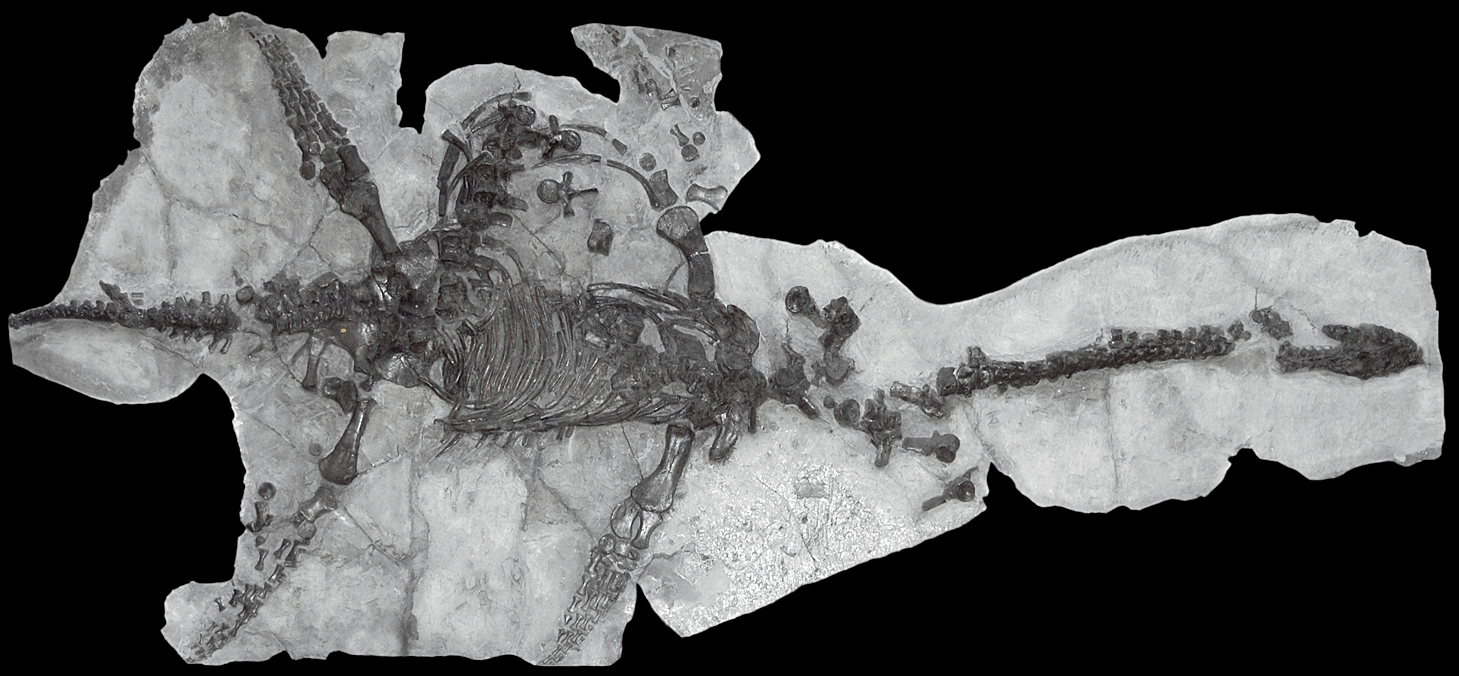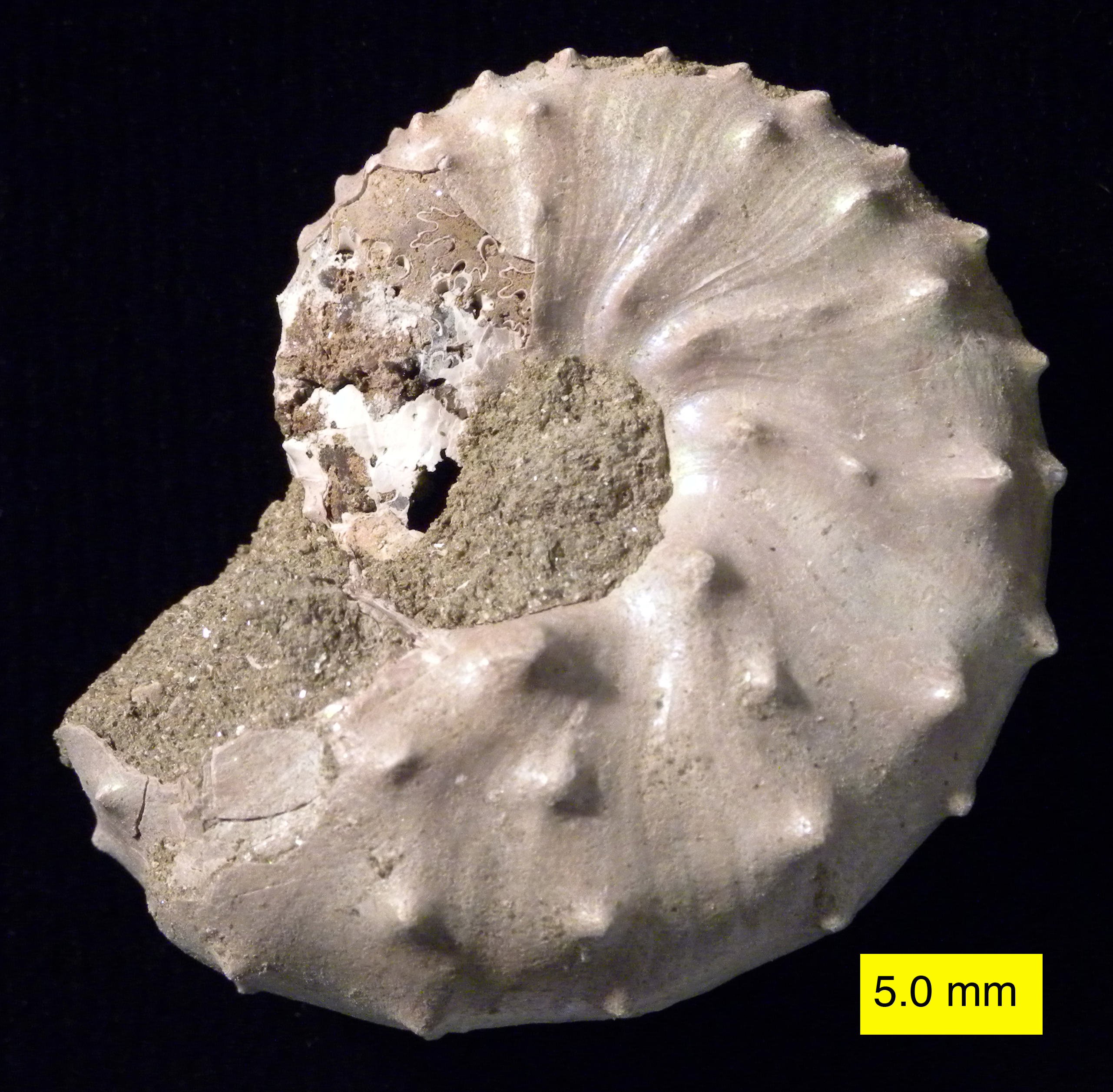|
Plesiosaur
The Plesiosauria (; Greek: πλησίος, ''plesios'', meaning "near to" and ''sauros'', meaning "lizard") or plesiosaurs are an order or clade of extinct Mesozoic marine reptiles, belonging to the Sauropterygia. Plesiosaurs first appeared in the latest Triassic Period, possibly in the Rhaetian stage, about 203 million years ago. They became especially common during the Jurassic Period, thriving until their disappearance due to the Cretaceous–Paleogene extinction event at the end of the Cretaceous Period, about 66 million years ago. They had a worldwide oceanic distribution, and some species at least partly inhabited freshwater environments. Plesiosaurs were among the first fossil reptiles discovered. In the beginning of the nineteenth century, scientists realised how distinctive their build was and they were named as a separate order in 1835. The first plesiosaurian genus, the eponymous ''Plesiosaurus'', was named in 1821. Since then, more than a hundred valid ... [...More Info...] [...Related Items...] OR: [Wikipedia] [Google] [Baidu] |
Peloneustes
''Peloneustes'' (meaning "mud swimmer") is a genus of pliosaurid plesiosaur from the Middle Jurassic of England. Its remains are known from the Peterborough Member of the Oxford Clay Formation, which is Callovian in age. It was originally described as a species of ''Plesiosaurus'' by palaeontologist Harry Govier Seeley in 1896, before being given its own genus by naturalist Richard Lydekker in 1889. While many species have been assigned to ''Peloneustes'', ''P. philarchus'' is currently the only one still considered valid, with the others moved to different genera, considered '' nomina dubia'', or synonymised with ''P. philarchus''. Some of the material formerly assigned to ''P. evansi'' have since been reassigned to ''"Pliosaurus" andrewsi''. ''Peloneustes'' is known from many specimens, including some very complete material. With a total length of , ''Peloneustes'' is not a large pliosaurid. It had a large, triangular skull, which occupied about a fifth of its body length. The ... [...More Info...] [...Related Items...] OR: [Wikipedia] [Google] [Baidu] |
Plesiosauroidea
Plesiosauroidea (; Greek: 'near, close to' and 'lizard') is an extinct clade of carnivorous marine reptiles. They have the snake-like longest neck to body ratio of any reptile. Plesiosauroids are known from the Jurassic and Cretaceous periods. After their discovery, some plesiosauroids were said to have resembled "a snake threaded through the shell of a turtle", although they had no shell. Plesiosauroidea appeared at the Early Jurassic Period (late Sinemurian stage) and thrived until the K-Pg extinction, at the end of the Cretaceous Period. The oldest confirmed plesiosauroid is ''Plesiosaurus'' itself, as all younger taxa were recently found to be pliosauroids. While they were Mesozoic diapsid reptiles that lived at the same time as dinosaurs, they did not belong to the latter. Gastroliths are frequently found associated with plesiosaurs. History of discovery The first complete plesiosauroid skeletons were found in England by Mary Anning, in the early 19th century, and wer ... [...More Info...] [...Related Items...] OR: [Wikipedia] [Google] [Baidu] |
Plesiosaurus
''Plesiosaurus'' (Greek: ' ('), near to + ' ('), lizard) is a genus of extinct, large marine sauropterygian reptile that lived during the Early Jurassic. It is known by nearly complete skeletons from the Lias Group, Lias of England. It is distinguishable by its small head, long and slender neck, broad turtle-like body, a short tail, and two pairs of large, elongated paddles. It lends its name to the order Plesiosauria, of which it is an early, but fairly typical member. It contains only one species, the type species, type, ''Plesiosaurus dolichodeirus''. Other species once assigned to this genus, including ''P. brachypterygius'', ''P. guilielmiimperatoris'', and ''P. tournemirensis'' have been reassigned to new genera, such as ''Hydrorion'', ''Seeleyosaurus'' and ''Occitanosaurus''. Discovery The first complete skeleton of ''Plesiosaurus'' was discovered by early paleontologist and fossil hunter Mary Anning in Sinemurian (Early Jurassic)-age rocks of the lower Lias Group in Dec ... [...More Info...] [...Related Items...] OR: [Wikipedia] [Google] [Baidu] |
Pliosauroidea
Pliosauroidea is an extinct clade of plesiosaurs, known from the earliest Jurassic to early Late Cretaceous. They are best known for the subclade Thalassophonea, which contained crocodile-like short-necked forms with large heads and massive toothed jaws, commonly known as pliosaurs. More primitive non-thalassophonean pliosauroids resembled pleisiosaurs in possessing relatively long necks and smaller heads. They originally included only members of the family Pliosauridae, of the order Plesiosauria, but several other genera and families are now also included, the number and details of which vary according to the classification used. The distinguishing characteristics are a short neck and an elongated head, with larger hind flippers compared to the fore flippers, the opposite of the plesiosaurs. They were carnivorous and their long and powerful jaws carried many sharp, conical teeth. Pliosaurs range from 4 to 15 metres and more in length. Their prey may have included fish, sharks, i ... [...More Info...] [...Related Items...] OR: [Wikipedia] [Google] [Baidu] |
Anningasaura
''Anningasaura'' is an extinct genus of basal plesiosaur. It is known from a single type species, ''A. lymense'', discovered in Early Jurassic rocks of Lyme Regis in the United Kingdom. Discovery ''Anningasaura'' is known only from the holotype specimen NHMUK 49202, which consists of a complete skull, palate, and mandible, with eight associated cervical vertebrae, including the atlas-axis complex. The partial skeleton came from a juvenile plesiosaur. It was originally referred to ''"Plesiosaurus" macrocephalus'' by Charles William Andrews in 1896, which is otherwise known only from the very young type specimen NHMUK OR1336. NHMUK 49202 was collected at Lyme Regis, of Dorset, from the Hettangian to early Sinemurian-aged beds of the Lower Lias Group. Description NHMUK 49202 possesses plesiomorphic characters, including premaxillae that do not separate the frontals on the midline, narrow cranioquadrate passages and the lack of a constricting groove around t ... [...More Info...] [...Related Items...] OR: [Wikipedia] [Google] [Baidu] |
Jurassic
The Jurassic ( ) is a Geological period, geologic period and System (stratigraphy), stratigraphic system that spanned from the end of the Triassic Period million years ago (Mya) to the beginning of the Cretaceous Period, approximately Mya. The Jurassic constitutes the middle period of the Mesozoic, Mesozoic Era and is named after the Jura Mountains, where limestone strata from the period were first identified. The start of the Jurassic was marked by the major Triassic–Jurassic extinction event, associated with the eruption of the Central Atlantic magmatic province, Central Atlantic Magmatic Province. The beginning of the Toarcian Stage started around 183 million years ago and is marked by an extinction event associated with widespread Anoxic event, oceanic anoxia, ocean acidification, and elevated temperatures likely caused by the eruption of the Karoo-Ferrar, Karoo-Ferrar large igneous provinces. The end of the Jurassic, however, has no clear boundary with the Cretaceous and i ... [...More Info...] [...Related Items...] OR: [Wikipedia] [Google] [Baidu] |
Sauropterygia
Sauropterygia ("lizard flippers") is an extinct taxon of diverse, aquatic reptiles that developed from terrestrial ancestors soon after the end-Permian extinction and flourished during the Triassic before all except for the Plesiosauria became extinct at the end of that period. The plesiosaurs would continue to diversify until the end of the Mesozoic. Sauropterygians are united by a radical adaptation of their pectoral girdle, adapted to support powerful flipper strokes. Some later sauropterygians, such as the pliosaurs, developed a similar mechanism in their pelvis. Uniquely among reptiles, sauropterygians moved their tail vertically like modern cetaceans and sirenians. Origins and evolution The earliest sauropterygians appeared about 247 million years ago (Ma), at the start of the Middle Triassic: the first definite sauropterygian with exact stratigraphic datum lies within the Spathian division of the Olenekian era in South China. Early examples were small (around 60 c ... [...More Info...] [...Related Items...] OR: [Wikipedia] [Google] [Baidu] |
Alexeyisaurus
''Alexeyisaurus'' is an extinct genus of possible plesiosaur known from the upper Triassic (lower-middle Norian age) of Wilczek Formation, Wilczek Land, of Franz Josef Land, Russia. It was first named by A. G. Sennikov and M. S. Arkhangelsky in 2010 and the type species is ''Alexeyisaurus karnoushenkoi''. While considered an elasmosaur in the initial publication It has been described as a "partial, poorly preserved, and undiagnostic sauropterygian skeleton" in subsequent publications. See also * Timeline of plesiosaur research * List of plesiosaur genera This list of plesiosaurs is a comprehensive listing of all genera that have ever been included in the order Plesiosauria, excluding purely vernacular terms. The list includes all commonly accepted genera, but also genera that are now considered inv ... References Elasmosaurids Triassic plesiosaurs Fossil taxa described in 2010 Extinct animals of Russia Plesiosaurs of Europe Plesiosaurs of Asia Sauropterygian gene ... [...More Info...] [...Related Items...] OR: [Wikipedia] [Google] [Baidu] |
Cretaceous–Paleogene Extinction Event
The Cretaceous–Paleogene (K–Pg) extinction event (also known as the Cretaceous–Tertiary extinction) was a sudden mass extinction of three-quarters of the plant and animal species on Earth, approximately 66 million years ago. With the exception of some ectothermic species such as sea turtles and crocodilians, no tetrapods weighing more than survived. It marked the end of the Cretaceous Period, and with it the Mesozoic era, while heralding the beginning of the Cenozoic era, which continues to this day. In the geologic record, the K–Pg event is marked by a thin layer of sediment called the K–Pg boundary, which can be found throughout the world in marine and terrestrial rocks. The boundary clay shows unusually high levels of the metal iridium, which is more common in asteroids than in the Earth's crust. As originally proposed in 1980 by a team of scientists led by Luis Alvarez and his son Walter, it is now generally thought that the K–Pg extinction was cause ... [...More Info...] [...Related Items...] OR: [Wikipedia] [Google] [Baidu] |
Mesozoic
The Mesozoic Era ( ), also called the Age of Reptiles, the Age of Conifers, and colloquially as the Age of the Dinosaurs is the second-to-last era of Earth's geological history, lasting from about , comprising the Triassic, Jurassic and Cretaceous Period (geology), Periods. It is characterized by the dominance of archosaurian reptiles, like the dinosaurs; an abundance of conifers and ferns; a hot Greenhouse and icehouse earth, greenhouse climate; and the tectonic break-up of Pangaea. The Mesozoic is the middle of the three eras since Cambrian explosion, complex life evolved: the Paleozoic, the Mesozoic, and the Cenozoic. The era began in the wake of the Permian–Triassic extinction event, the largest well-documented mass extinction in Earth's history, and ended with the Cretaceous–Paleogene extinction event, another mass extinction whose victims included the non-avian dinosaurs, Pterosaur, pterosaurs, Mosasaur, mosasaurs, and Plesiosaur, plesiosaurs. The Mesozoic was a time of ... [...More Info...] [...Related Items...] OR: [Wikipedia] [Google] [Baidu] |
Marine Reptile
Marine reptiles are reptiles which have become secondarily adapted for an aquatic or semiaquatic life in a marine environment. The earliest marine reptile mesosaurus (not to be confused with mosasaurus), arose in the Permian period during the Paleozoic era. During the Mesozoic era, many groups of reptiles became adapted to life in the seas, including such familiar clades as the ichthyosaurs, plesiosaurs (these two orders were once thought united in the group "Enaliosauria", a classification now cladistically obsolete), mosasaurs, nothosaurs, placodonts, sea turtles, thalattosaurs and thalattosuchians. Most marine reptile groups became extinct at the end of the Cretaceous period, but some still existed during the Cenozoic, most importantly the sea turtles. Other Cenozoic marine reptiles included the bothremydids, palaeophiid snakes, a few choristoderes such as ''Simoedosaurus'' and dyrosaurid crocodylomorphs. Various types of marine gavialid crocodilians remained widespread as ... [...More Info...] [...Related Items...] OR: [Wikipedia] [Google] [Baidu] |
Lindwurmia
''Lindwurmia'' is a rhomaleosaurid plesiosaur from the Early Jurassic of Germany Germany,, officially the Federal Republic of Germany, is a country in Central Europe. It is the second most populous country in Europe after Russia, and the most populous member state of the European Union. Germany is situated betwe .... It contains a single species, ''Lindwurmia thiuda''. It was a small plesiosaur, measuring long and weighing . References {{Taxonbar, from=Q63524265 Extinct animals of Europe ... [...More Info...] [...Related Items...] OR: [Wikipedia] [Google] [Baidu] |








